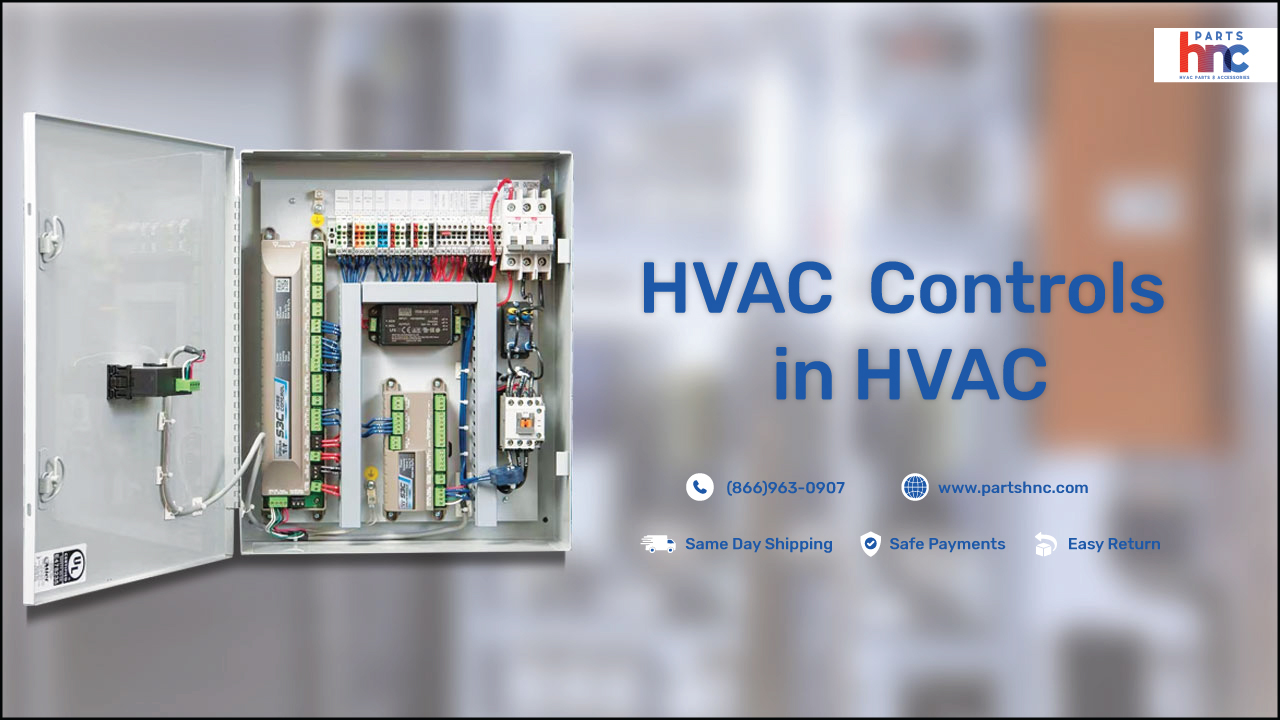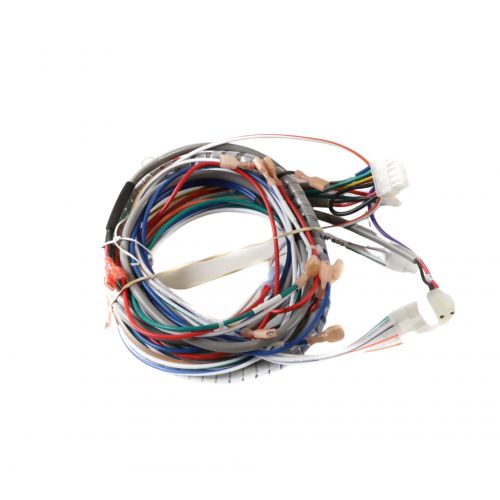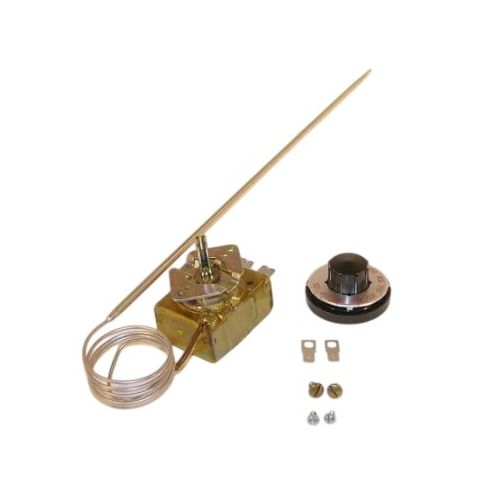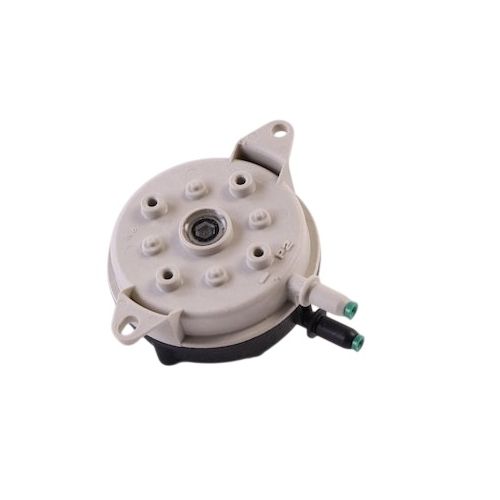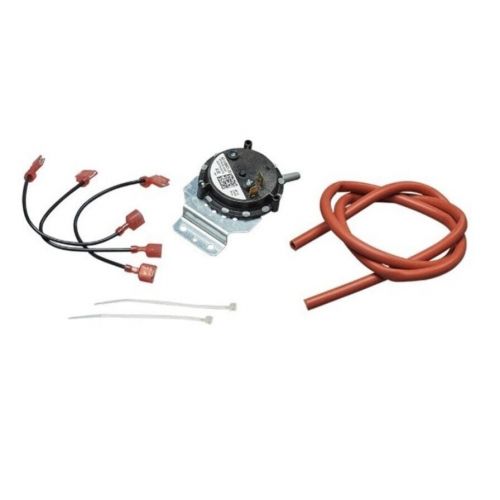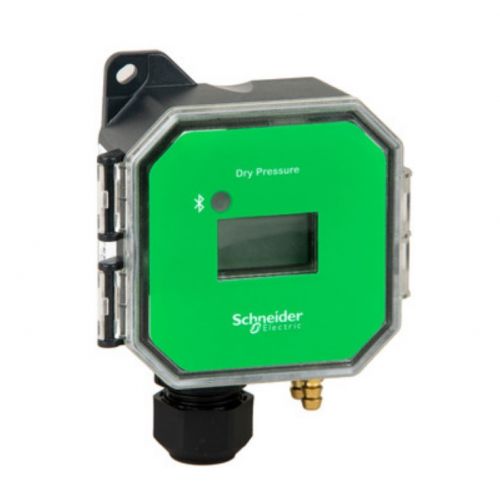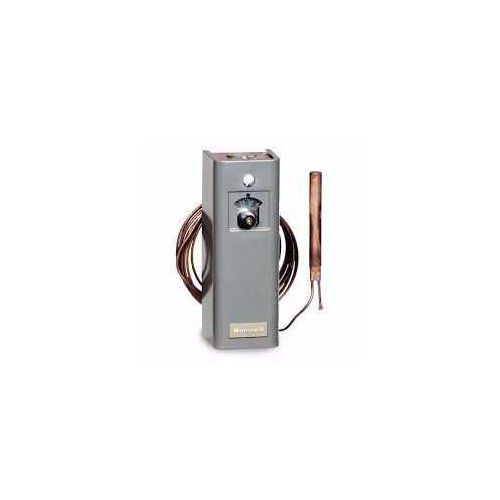Understanding HVAC Control Systems and Their Functionality
How does an HVAC system work?HVAC control systems are an essential component of modern commercial or residential buildings. It is responsible for maintaining a comfortable indoor environment by regulating heating, ventilation, and air conditioning systems. These systems are designed to provide precise control over temperature, humidity, air quality, and other environmental factors to ensure optimal occupant comfort and energy efficiency. PartsHnC offers a wide range of HVAC controls parts from reputable manufacturers, ensuring the availability of high-quality products to customers. With affordable prices, it is easier for everyone to access and enjoy efficient and effective temperature control in their homes or commercial spaces.
Moreover, the HVAC controls market is expected to witness significant growth in the coming years, with a projected increase from USD 13.6 billion in 2018 to USD 27.0 billion by 2023. This growth is a clear indication of the increasing demand for HVAC systems in commercial and residential buildings. If you are new to the HVAC industry or simply want to learn more about building operations and energy consumption, it's a great time to get started. Understanding HVAC systems and controls can help you make informed decisions regarding building management and energy efficiency. We are committed to helping you take your first step towards learning more about these systems and their role in building operations.
Table of Contents
- What are HVAC Controls and why are they important
- Types of HVAC Controls
- Components of HVAC Controls
- How does HVAC Control work?
- Benefits of properly functioning HVAC Controls
- HVAC controls maintenance and troubleshooting tips
- Troubleshooting HVAC controls involves identifying and fixing any issues that arise. Here are some common troubleshooting tips:
- FAQs
What are HVAC Controls and why are they important
HVAC controls are the electronic devices that are used to control the heating, cooling, and ventilation systems in buildings. These systems let building owners control temperature, operate ventilation fans or dampers inside HVAC ducts, and turn on or off the furnace or air conditioning.
The performance and energy efficiency of the building are the main goals of HVAC controller. Building managers can improve the building's heating and cooling while reducing energy use by using these systems. Advanced HVAC control systems also come with sensors that enable automatic modifications based on the temperature, the requirement for better air quality, or the presence of smoke, fire, or too much humidity.
What does HVAC controls do?HVAC controls are frequently integrated with building automation or energy management systems in larger complexes. Together with lighting, security, communication, and fire control, these systems also control heating and cooling. With this connectivity, building managers have the convenience and flexibility to handle the system locally or from a distance.
Know more about Different Types Of Valves Used In HVAC Systems
Types of HVAC Controls
Understanding how HVAC systems work involves recognizing the pivotal role played by HVAC controls in regulating temperature, humidity, and airflow to create a comfortable and efficient indoor environment. There are several different types of HVAC controls available, which can be classified based on the type of HVAC system they are used in.
Self-contained unit packages HVAC controls: Self-contained unit packages HVAC systems consist of a single unit that provides heating and cooling to a specific space. These systems are typically found in small to medium-sized buildings and can be controlled using a variety of different HVAC controls.
Thermostats are a common type of HVAC control used with self-contained unit packages. These controls allow users to adjust the temperature in a specific space, ensuring that the heating and cooling processes are running efficiently.
Programmable thermostats are another type of HVAC control that can be used with self-contained unit packages. These controls allow users to set specific temperature settings for different times of the day, ensuring that energy is not wasted on heating or cooling an unoccupied space.
Central systems HVAC controls: Central systems are a more complex type of HVAC system that consists of a central supply subsystem and multiple end-use subsystems. These systems are typically found in larger buildings and facilities and require more advanced HVAC controls to manage.
Building automation systems (BAS) are a common type of HVAC control used with central systems. These controls allow users to monitor and manage the heating and cooling processes throughout the entire building or facility. BAS systems can be programmed to adjust temperature settings based on occupancy levels, time of day, and weather conditions, ensuring that energy is not wasted on heating or cooling an unoccupied space.
Variable air volume (VAV) controls are another type of HVAC control commonly used with central systems. These controls allow users to adjust the airflow in different zones within the building or facility, ensuring that each area is receiving the optimal amount of heating or cooling.
Components of HVAC Controls
There are several components that control heating and cooling systems, which are listed below:
Alarm: Sometimes electrical devices burn because of high voltage electrical supplies or for any other reason. That's when turning the power off is important. Electrical system damage may harm life. Alerting is important for this kind of incident. That is why HVAC systems use alarms to notify you of a burning HVAC system by making noise.
A Circuit Breaker: A circuit breaker is an important component of electrical safety equipment for your air conditioner. It aids in the protection of your air conditioner from harm done by overloading or short circuits. When there is a high-voltage current flowing through the Electrical Wire, then the circuit breaker trips and shuts off the electricity supply until the situation is resolved. The circuit breaker will reset after the issue is resolved.
Control Board: In your HVAC system operation, the control board fulfills several functions, such as regulating lights and other components of a device. One of its major responsibilities is taking input data from your system sensors and thermostat. It makes judgments based on that input information and then sends messages to other system components to manage the temperature of your building or room.
Expansion Valve: When the refrigerant comes from the condenser coil with a high temperature and high pressure to the evaporator coil, the expansion valve decreases or controls the pressure of the refrigerant. It plays an important role in the cooling process. If the expansion valve is damaged, then repair or replace it. Because a failed expansion valve overloads your air conditioning work.
Flame sensor: The gas is ignited by a hot surface ignitor or a spark, and a flame sensor detects the presence of a flame within the furnace. Flame sensor accuracy is important in the furnace heating process. If your furnace shows any burning issues, it may be because of the damaged flame sensor. Want to repair your faulty flame sensor by yourself? Then read this article to understand the process of repairing and replacing the flame sensor in a furnace.
Gas valve: A furnace gas valve is part of the fuel system of your furnace. Your Furnace's Gas Valve manifold opens and shuts to allow gas to be burned to generate heat. It is completely in charge of delivering and changing the flow of gas pressure into your furnace to keep it lighted while it is in use.
Gauge: An HVAC gauge measures the pressure of various liquids and gasses in an air conditioning system. It is a gadget that is used to measure a physical quantity. Gauges come in a variety of shapes and sizes, including plug gauges, ring gauges, taper gauges, snap gauges, thread gauges, form gauges, feeler gauges, and indication gauges.
Limit switch: The furnace blower component is activated and deactivated by the furnace fan limit switch. Two or three Limit Switches will be installed in the furnace to monitor temperatures in various regions of the furnace. Use quality limit switches for your furnace's work efficiency.
Overloaded: Overheating is caused by clogged air filters, filthy condenser coils, and refrigerant leaks. It reduces the efficiency of the system's operation. The overload protects the compressor by shutting it down when it becomes too hot.
HVAC Pilot: In gas-fired equipment, such as your furnace, water heater, and gas fireplace, the pilot light is a small flame that is maintained ablaze. It is a necessary part of gas-burning systems. Replacing a damaged pilot is an easy process, but this heating element may injure you. So call a technician for repair or replacement work.
Pressure switch: A furnace pressure switch is a self-contained safety device. It detects negative pressure. At the time of negative pressure, it turns off the furnace. The pressure switch saves your device and home from back-drafting. If you feel your pressure switch is in bad condition, then check the condition with the help of a multimeter.
Relay Kit: Like other switches, relays govern the opening and closing of electronic circuit contacts.
Reversing valve: A reversing valve is used to shift the refrigerant's direction in indoor and outdoor units. Poppet-type and slide-type are types of reversing valves. Reach out more about the reversing valve.
Service Valve: The service valve is a helpful valve for technicians. When you want to replace the refrigerant without opening your air conditioning unit, just open the service valve and replace your refrigerant. The service valve is situated outside of the outdoor unit.
Setpoints: Setpoints are used for both heating and cooling purposes. A heating setpoint is used to heat the room and a cooling setpoint is used to cool the room by setting the setpoint temperature and attempting to maintain it.
Switches: Switches are used to control functions like on/off. All types of HVAC Switches are easily available on the PartsHnC platform at a low cost.
Thermocouple: Like circuit breakers, pressure switches, and other safety components, the thermocouple is also one of the most important safety components. It's used to confirm whether the furnace's pilot light is on or off.
Thermostat: The thermostat plays a crucial role in maintaining room temperature. Its sensors detect the temperature within your home and transmit input data to your HVAC system. Input assists the system in maintaining the desired temperature inside your room/building by adjusting humidity and heat.
Time Delay: Rapid cycling of compressors can damage HVAC equipment, hence time-delay relays are utilized to protect it.
Timer: It works as a timed power source. Your air conditioner's Power Cord is connected to the timer switch, which is plugged into the wall. The switch can be programmed to turn the air conditioner on or off when a certain amount of time has passed.
Transformers: The transformer is the part of your furnace that increases or decreases the voltage of the home's alternating current, or AC. This section of your home is responsible for transferring electrical currents from one location to another.
Valves: HVAC valves are used to regulate the flow of water in pipes. Valves govern the flow of water, gas, and air in major components of an HVAC system such as the water chiller, air handling units, cold water pumps, and fan coil units.
Wire Harness: In HVAC applications, electrically operated wire harnesses are utilized to control circuit boards in HVAC equipment. Wire harnesses require sleeving in specific dimensions for protection because these systems involve humidity and other risks to electrical components.
How does HVAC Control work?
Modern HVAC controls use cutting-edge technology to control indoor temperatures, humidity, air quality, and oxygen replenishment. These control systems function by using sensors to determine the air quality, humidity, and temperature in various building zones. The system then modifies the temperature, humidity, and air quality based on these readings to offer the best levels of comfort for building occupants.
Warm and cool air are sent through the same ducts and are controlled by the same thermostat in a centralized HVAC system. However, in order to maintain efficient and effective performance, larger HVAC systems call for more complicated operational sequences. Three major levels—operator orders, logic programming, and weekly schedules—are established to determine which directions a piece of equipment should heed.
The system is operated at the operator level by a person giving direct directions, whereas at the logic programming level, the machinery is operated in accordance with a pre-planned series of events. A list of days and hours when the equipment should be on or off is included in the weekly schedule level as a last step. HVAC control systems can run effectively and efficiently with these priority levels in place, delivering the best possible comfort and air quality while consuming the least amount of energy.
Know more about What Is Heat Exchanger In HVAC?
Benefits of properly functioning HVAC Controls
Properly HVAC management offer numerous benefits to building occupants, including improved comfort levels, increased indoor air quality, and energy efficiency. When HVAC systems are calibrated and programmed correctly, they can provide consistent temperatures throughout the building, leading to more comfortable and productive workspaces.
In addition to comfort, they can help maintain high indoor air quality. HVAC systems can filter and ventilate the air to remove pollutants, such as dust, mold, and allergens, which can help prevent health issues like allergies, asthma, and respiratory infections.
Finally, they can save energy and reduce utility bills. HVAC systems that are programmed to run only when needed can reduce energy waste and prevent unnecessary wear and tear on equipment. This can lead to lower operating costs, increased equipment lifespan, and a smaller carbon footprint for the building.
HVAC controls maintenance and troubleshooting tips
A malfunctioning HVAC control system can cause discomfort, health hazards, and higher energy bills. Maintenance of HVAC controls is essential to keep the system running efficiently and prevent potential problems. Regular maintenance can extend the life of the controls and prevent downtime. Some maintenance tips for HVAC controls include:
Regular Cleaning: Dirt and dust accumulation can damage HVAC controls, leading to malfunctioning. Cleaning the controls regularly with a soft cloth or a brush can prevent the accumulation of dirt.
Check Wiring Connections: Loose wiring connections can cause malfunctions in the HVAC controls. Regularly checking the wiring connections and tightening any loose wires can prevent such issues.
Replace Batteries: Most HVAC controls run on batteries, and replacing the batteries regularly can prevent malfunctions due to low battery life.
Calibration: HVAC controls need to be calibrated regularly to ensure their accuracy. Calibration involves adjusting the settings of the control to match the set temperature and humidity levels.
Check for Damages: Any physical damage to the HVAC controls can affect their functioning. Regularly checking for damages and repairing or replacing damaged parts can prevent malfunctions.
Troubleshooting HVAC controls involves identifying and fixing any issues that arise. Here are some common troubleshooting tips:
Check the Power Supply: If the HVAC controls are not working, the first thing to check is the power supply. Check if the control is receiving power and if the batteries are working correctly.
Check the Settings: Make sure that the settings on the HVAC controls are set correctly. Check the temperature, humidity levels, and fan settings.
Check the Wiring Connections: Loose or damaged wiring connections can cause the HVAC controls to malfunction. Check the wiring connections and tighten any loose wires.
Reset the Control: Sometimes, resetting the HVAC control can fix the issue. Refer to the user manual to know how to reset the control.
Call a Professional: If you cannot identify or fix the issue, it is best to call a professional HVAC technician. They have the expertise and tools to diagnose and fix the problem.
Read our blog to know more about how to become a HVAC controls technician, and to know how much do hvac control techs make.
With advances in technology, modern HVAC control systems have become increasingly sophisticated, offering more precise and customizable control options. By investing in an HVAC control system, building owners can not only improve occupant comfort but also reduce energy consumption and operating costs.
FAQs
What is the function of the hvac system?
The HVAC system functions to control and maintain indoor environmental conditions, including temperature, humidity, and air quality, through the coordinated operation of HVAC controls, ensuring comfort and efficiency in residential, commercial, and industrial spaces.
How does a HVAC thermostat work?
HVAC thermostats work by sensing the ambient temperature and, based on user-set preferences, sending signals to HVAC controls to regulate the heating or cooling systems, maintaining the desired indoor temperature.
 Loyalty Program
Loyalty Program

